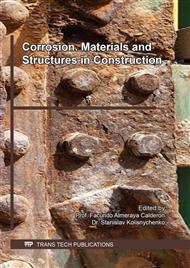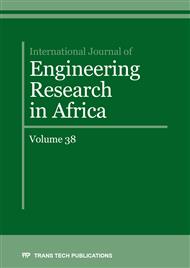p.9
p.17
p.26
p.46
p.60
p.67
p.79
p.87
p.100
Corrosion of Steel Reinforcements in Concretes of Non-Coastal Areas - Case Study: Kigali, Rwanda
Abstract:
It is the function of concrete cover to protect reinforcement against corrosion from environmental attack. However, reinforced concrete structures in most cases suffer from corrosion of steel reinforcement and their service lives will be reduced. The steel in concrete is always prone to corrosion attack, and the reason being that concrete cover is porous in nature. Fluids and dissolved ions can impregnate through pore space or through cracks and come in contact with reinforcement. Preventive maintenance is the best corrosion control mitigation measure for reinforced concrete structures. This paper highlights the causes of corrosion in non-coastal areas like Kigali in Rwanda. Condition assessment of two reinforced concrete buildings in Kigali has been made based on structural survey. It was found that Crack width varies up to 2mm in column and beams. It is also suggested that to improve the life span of the columns and beams by retrofitting with advanced materials and the new structures are to be constructed with corrosion monitoring systems.
Info:
Periodical:
Pages:
60-66
Citation:
Online since:
September 2018
Authors:
Price:
Сopyright:
© 2018 Trans Tech Publications Ltd. All Rights Reserved
Share:
Citation:



